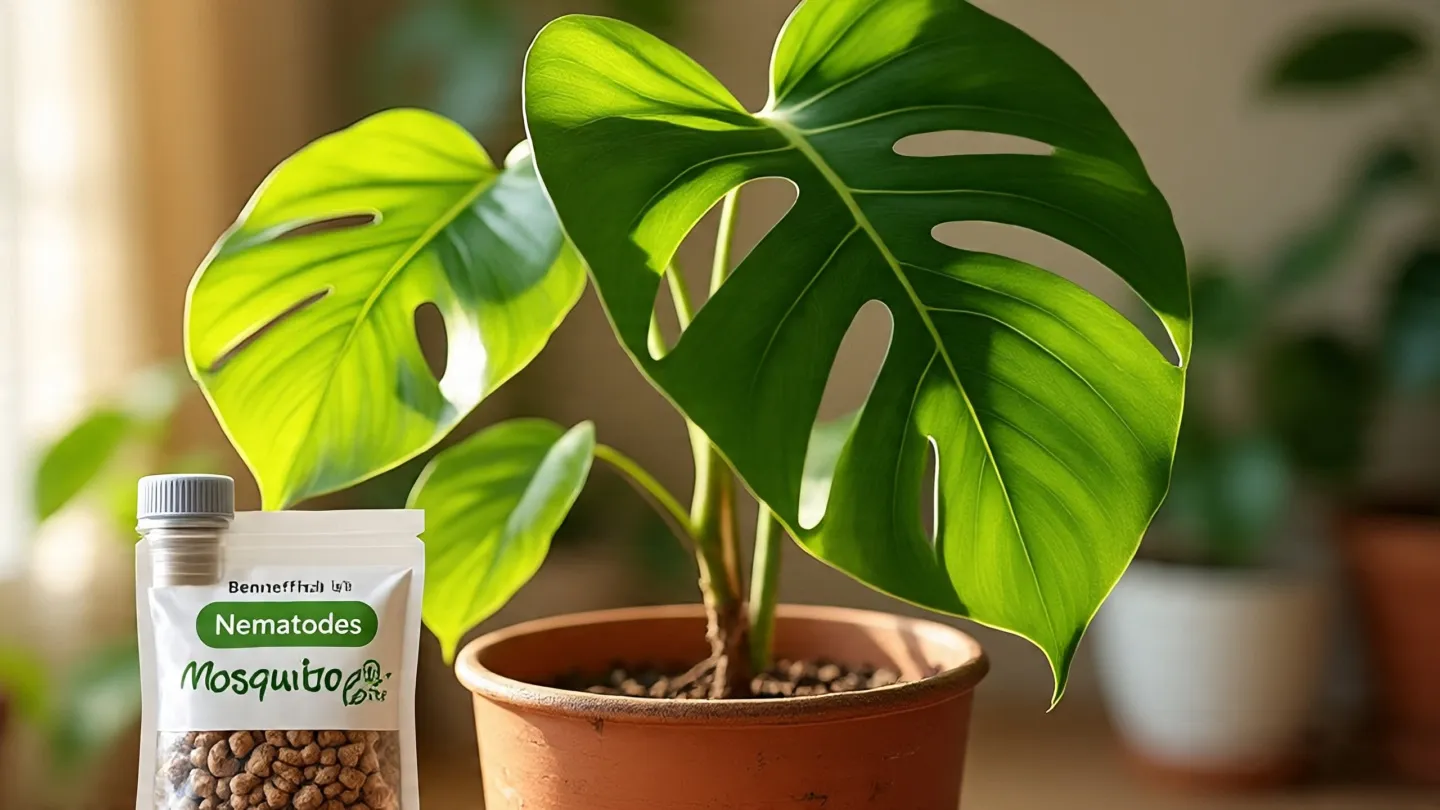If you’ve noticed a cloud of tiny, dark flies erupting from your favorite houseplant every time you water, you’ve met the fungus gnat. While the adults are merely annoying, their larvae live in the soil, potentially snacking on delicate root hairs. The good news? They are one of the easiest houseplant pests to defeat with a smart, scientific approach.
First, Confirm Your Enemy
Before you treat, make sure you’re dealing with fungus gnats (Bradysia species). Adults are small (about 2-4mm), delicate, dark-winged flies with long legs and antennae. They have a distinctive Y-shaped wing vein and are weak fliers, often seen walking or hopping on soil surfaces.
The real problem lives below the surface. The larvae are tiny, translucent worms with shiny black heads, found in the top 2-3 inches of soil. A classic diagnostic trick: place a thin slice of raw potato on the soil surface. Check it in 4-6 hours; larvae will be drawn to it and will be clearly visible on the underside.
The Core of the Problem: Moisture
Fungus gnats are a symptom, not the disease itself. The disease is consistently wet soil. Adult gnats are attracted to damp, organic-rich potting mix to lay their eggs. The larvae then thrive, feeding on fungi and organic matter (and sometimes roots). Therefore, any successful strategy must begin with moisture management.
The 14-Day Professional Elimination Plan
This plan attacks all stages of the gnat’s life cycle: eggs, larvae, and adults.
Day 0: The Setup (Do this immediately)
- Isolate & Inspect: Move heavily infested plants away from others to prevent migration.
- Dry Out: Let the top 1-2 inches of soil dry out completely before you even think about watering again. This desiccates eggs and larvae and makes the soil unattractive to egg-laying adults.
- Deploy Sticky Traps: Place yellow sticky traps horizontally on the soil surface or vertically nearby. The bright yellow attracts adults, trapping them before they can reproduce. This doesn’t fix the larvae issue, but it breaks the breeding cycle and gives you a visual gauge of the infestation level.
Day 1: Strike at the Source (The Larvae)
This is the most critical step. You must target the larvae in the soil. Choose one of these two proven, biological controls.
- Option A: Bti (Bacillus thuringiensis subsp. israelensis)
- What it is: A naturally occurring bacterium that is absolutely lethal to fungus gnat and mosquito larvae. It’s non-toxic to humans, pets, plants, and beneficial insects.
- How to use: The most common form is “mosquito bits” or “dunks.” Steep the recommended amount in your watering can for 30 minutes to release the bacteria. Water your plants thoroughly with this solution. The larvae ingest the Bti, which stops them from feeding and they quickly die. Repeat this treatment every 5-7 days for at least 3-4 cycles to ensure you kill all larvae as they hatch.
- Option B: Beneficial Nematodes (Steinernema feltiae)
- What they are: Microscopic, worm-like parasites that are natural predators of soil-dwelling pests.
- How to use: You mix them with water and drench the soil. The nematodes actively seek out gnat larvae, enter their bodies, and release symbiotic bacteria that kill the host. They are incredibly effective. Ensure the soil is moist before and after application and that soil temperatures are within the effective range (usually above 60°F/15°C).
Day 3-4: Monitor
Check your sticky traps. They should be filling up. Replace them if they’re full. Continue to let the soil surface dry.
Day 7: Reapply & Reassess
Repeat your Bti or nematode application as directed. If any plant’s soil is still staying soggy days after watering, it’s time to reconsider the plant’s environment and potting mix.
Day 14: Evaluate Success
By now, you should see a dramatic reduction—or complete absence—of adults on the traps. Use the potato slice test again to check for any remaining larvae. If you still see them, continue your bi-weekly Bti treatments until they are gone.
What About Hydrogen Peroxide, Cinnamon, or Neem Oil?
Many DIY solutions are popular but fall short of a complete solution.
- Hydrogen Peroxide: A diluted solution (1 part 3% H₂O₂ to 4 parts water) will fizz and kill larvae on contact. However, it’s a short-term, blunt instrument. It doesn’t have residual effects and can harm beneficial soil microbes. It’s a temporary fix, not a cure.
- Cinnamon, Coffee Grounds, or Sand Toppings: There is no scientific evidence these eliminate infestations. Sand might dry the surface and deter egg-laying temporarily, but it can also compact and hinder water penetration, making problems worse in the long run. Don’t rely on them.
- Neem Oil: While a useful organic insecticide for foliage pests, neem soil drenches are not reliably effective against fungus gnat larvae and can be hard on plants.
Prevention: The Long-Term Strategy
The goal is to create an environment where fungus gnats can’t get a foothold.
- Water Wisely: This is the #1 rule. Always let the top layer of soil dry out. Learn to water based on the plant’s weight and needs, not a fixed schedule. Bottom-watering is a fantastic technique to adopt, as it keeps the surface dry while the plant soaks up what it needs from below.
- Upgrade Your Potting Mix: Use a well-draining, high-quality potting mix. Avoid mixes with a high percentage of fine peat, which retains too much water. For plants that prefer drier conditions, amend your mix with perlite, orchid bark, or coarse sand to improve aeration and drainage.
- Ensure Proper Drainage: Never let a plant sit in a saucer of standing water. Empty it shortly after watering.
- Quarantine New Plants: Treat every new plant as if it might be harboring pests. Keep it isolated for a few weeks and monitor it, perhaps with a sticky trap, before introducing it to your collection.
- Repot When Necessary: Over time, organic potting mixes break down and compact, holding more water. Repotting into fresh mix every few years can prevent this.

Leave a Reply